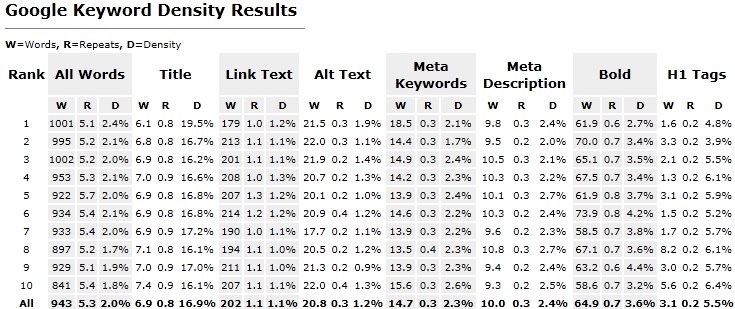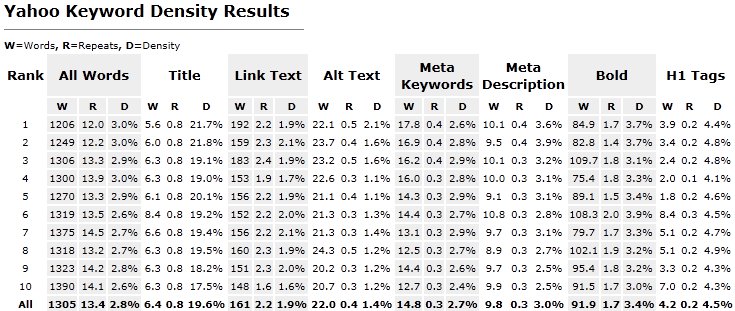Keyword Density Tutorial
Keywords are vital to your site’s SEO. Keywords are the cornerstone of your entire SEO campaign. Without the right keywords, your SEO structure has no foundation and will get you nowhere. Understanding keyword density is one step to leveraging your website’s on-site optimization. This is a Tutorial to Keyword Density.
Keyword density deals with the ratio of your keywords in light of the total number of indexable words placed in your webpage. For example, you have 100 words article, then having a 1% keyword ratio means that you should have the presence of your keyword one time within that 100 word text.
Why does keyword density have to do with SEO?
Being mindful of your keyword density can give a signal to the search engines that your article is all about a certain specific topic – which is the keyword you are targeting. Having this signal gives your webpage relevance and good keyword presence.
Don’t mistake this with keyword stuffing. Keyword stuffing is squeezing in as much of your desired keyword as you can inside your article without much/any regard to your readers. Keyword stuffing is plain wrong and is a spammy method that won’t get you up in the ranks anyway.
The recommended keyword density is not the same for all search engines. For example, Google’s recommended keyword density ranges from 1-2%(pictures taken from gorank.com)
While Yahoo’s recommended keyword density is at 3%. In general, I would recommend that you stick to 2%.
Is keyword density still used in SEO today? Yes I’m sure it is. It still has an effect to the search engines to some extent. But if you ask me if people still count their keyword density, I would say no. Why? Because people don’t usually write for search engines – unless he/she is a black hatter or a spammer trying to get up the ranks quick.
Tips for Keeps: You don’t need to really count if you have a 2% ratio in order to rank well. Just try to be mindful to insert your keywords when necessary. Don’t overdo it. Write for people because in the end, it’s people who will be reading what you have to say.
This entry is part of the SEO Hacker School series: Complete On Site Optimization Tutorial


